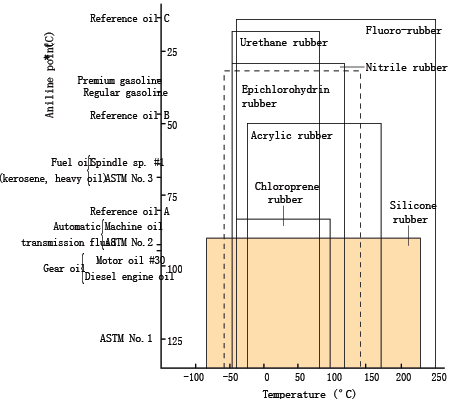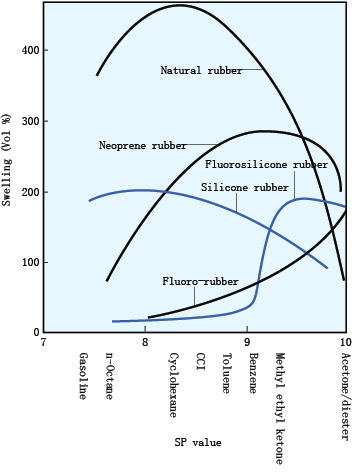| |
|
|
|
Silicone rubber has outstanding resistance to oil at high temperatures. Among common organic rubbers, nitrile rubber and chloroprene rubber have somewhat higher oil resistance at temperatures below 100∑C, but at higher temperatures silicone rubber is superior.
Silicone rubber also has excellent resistance to
solvents and other chemicals. It is essentially
unaffected by polar organic compounds (aniline,
alcohol, etc.) or dilute acids or bases, with the
increase in volume due to swelling in the range of only 10%-15%. Silicone rubber does swell in non-polar organic compounds like benzene, toluene and gasoline; but unlike most organic rubbers, it does not decompose or dissolve, and will return to its former state when the solvent is removed. Silicone rubber is, however, adversely affected by strong acids and bases, so it should not be used where it will come in contact with such chemicals.
Typically, the effects of solvents on silicone are
evidenced by the swelling, softening and reduced strength of the rubber; the extent of these effects depends on the type of solvent involved. |
| Temperature range and various oils applicable to various rubbers |
 |
| Aniline point: the lowest temperature at which equal portions of an oil and aniline are completely miscible. The lower the aniline point, the greater the swelling effect of the oil. |
| |
| Correlation between solubility parameter value (SP value) of a solvent and rubber swelling |
 |
The solvent resistance of fluorosilicone rubber is particularly high,
although all silicone rubbers resist solvents better than other types of rubber. |
| |
|
|
|
|